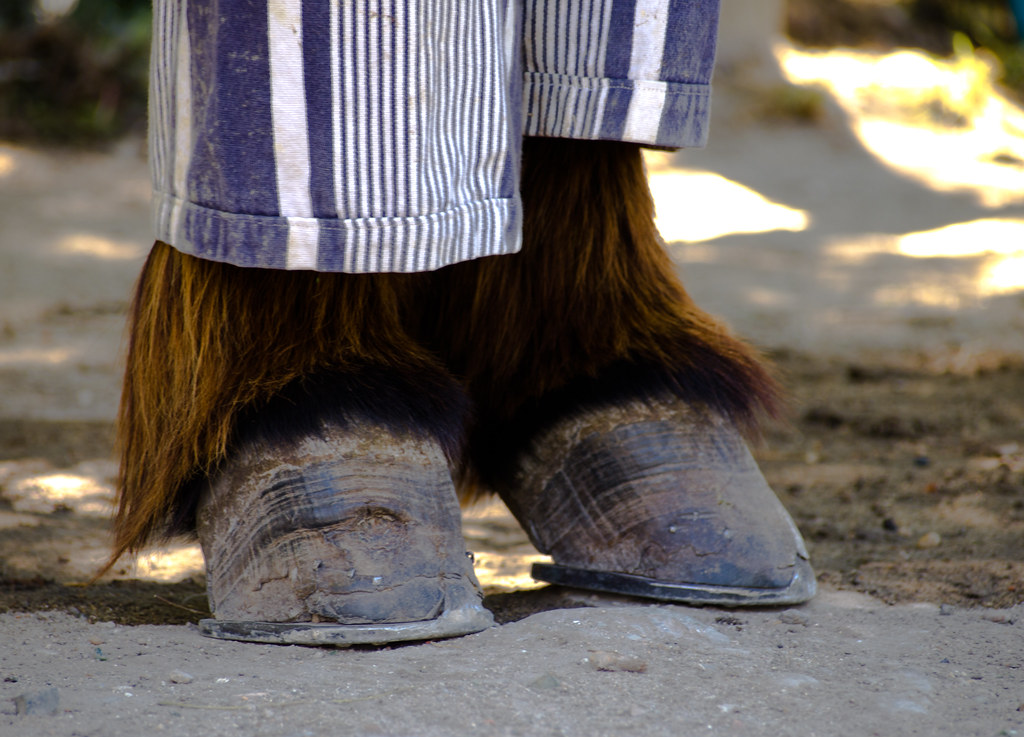The Island of Rhea, or Île-de-Ré in French, off the west coast of France near La Rochelle, is a popular summer destination known for its gently sloping, sandy beaches, cool waters and constant light breeze, which are a real treat for families and tourists. The island’s other famous attraction are its donkeys.
The donkeys of Ile de Ré are no ordinary breed —they are Poitou donkeys, or Baudet du Poitou in French. Originating from the Poitou region of France, they are one of the largest donkey breeds, and because of their size they were employed largely as working mules in the island’s salt industry. The most distinguishing feature of Poitou donkeys, apart from their size, is their long shaggy coat, called a cadanette, which hangs in long, ungroomed cords that further emphasizes their above-average size.
A pair of Poitou donkeys in their traditional garb. Photo credit: Jiel Beaumadier/Wikimedia
Because of their size and strength, Poitou donkeys were put to work in the salt marshes of the Charente Maritime, and on fields where they were often troubled by mosquitoes and bug bites. In order to protect the animals’ legs from mosquito and other bug bites, the owners would have them wear specially made trousers each day before they went to work. The trousers were made of old red Vichy pattern curtain fabrics or grey striped mattress ticking, giving them the name “Anes en Culotte” or “donkeys in panties”.
Donkeys are no longer used for work in the salt marshes, but the tradition of wearing trousers continues to this day, mostly to draw tourists.
Poitou mules were once the most sought after throughout Europe, and were called the "finest working mule in the world”. Until the middle of the 20th century, up to 30,000 mules were bred annually in the Poitou region and exported all over the world. But as mechanization increased around World War II, the demand for mules decreased and the market collapsed. The population of both mules and donkeys dropped dramatically. In 1977, only 44 Poitou donkeys remained worldwide. Thanks to conservation efforts in the latter decades of the 20th century, there are now over 450 Poitou donkeys in the world as of 2005.
Photo credit: Jiel Beaumadier/Wikimedia
An undated postcard of a Poitou donkey working on the salt marsh. Photo credit: nymoon/www.delcampe.net
A Poitou donkey without his trouser. Photo credit: Tambako The Jaguar/Flickr
Sources: Poitou Charentes Vendée / France uncovered / Wikipedia

















Comments
Post a Comment